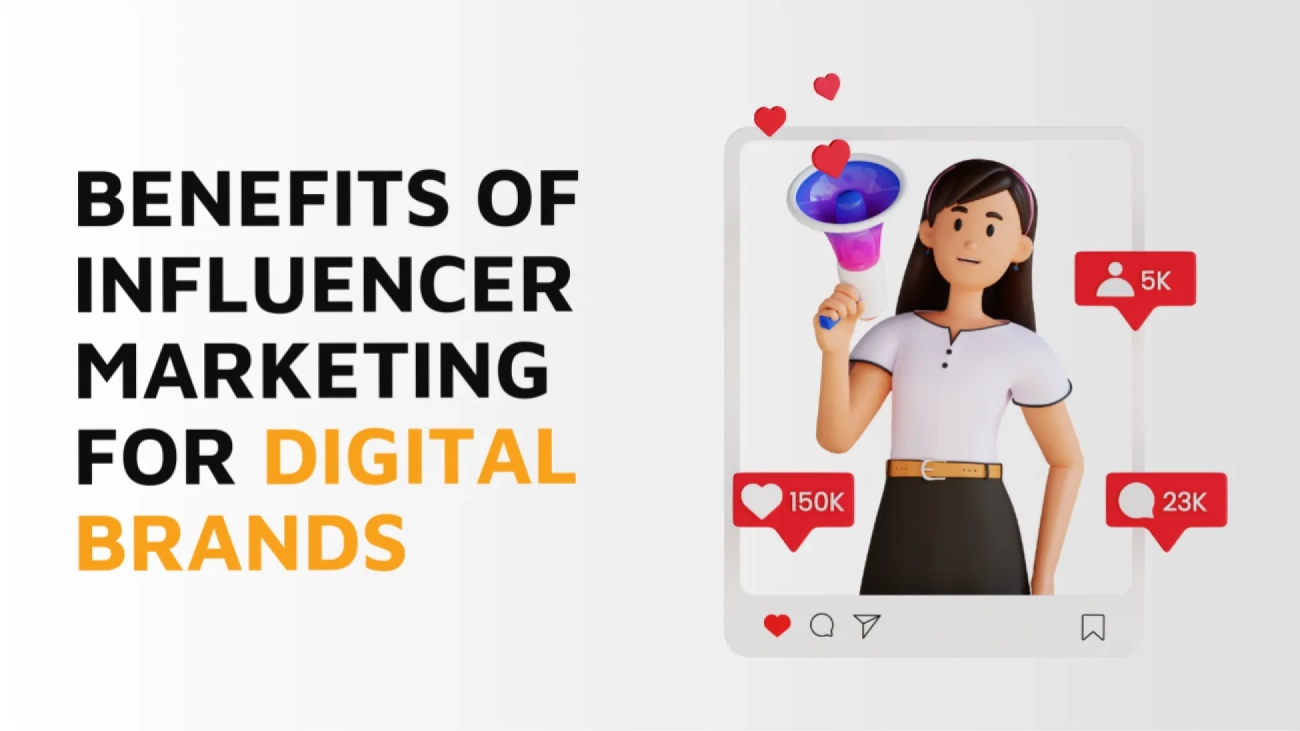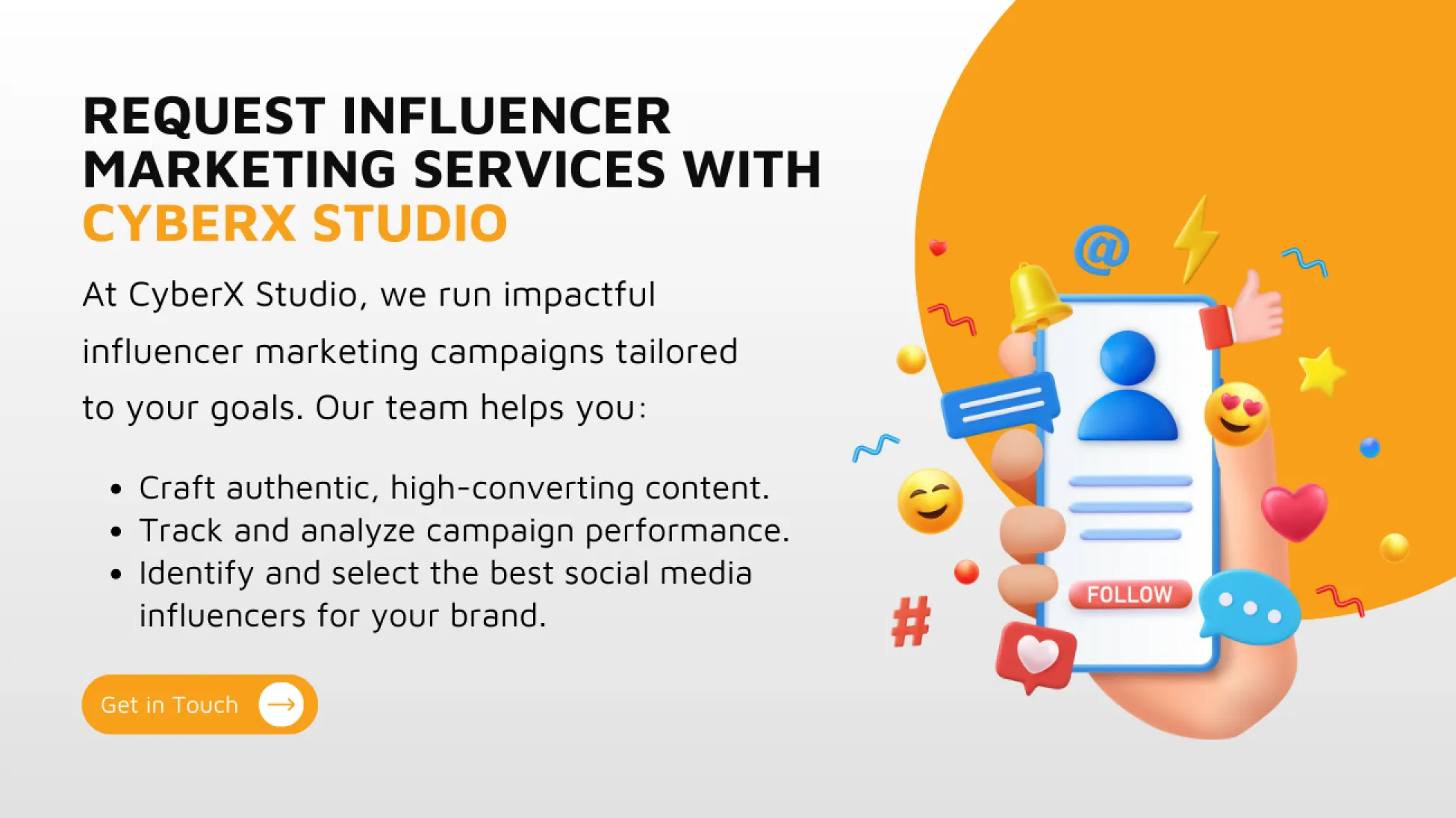What Is Influencer Marketing?
Influencer marketing is a powerful marketing strategy where brands collaborate with social media influencers or digital influencers to encourage the promotion of their products and services. These influencers have loyal followers on platforms like Instagram, TikTok, and YouTube, making them valuable assets for brands looking to connect with specific audiences.
Unlike traditional advertising, influencer marketing campaigns feel authentic and personal, leveraging the trust influencers have built with their audiences.
Related: Top 15 Digital Marketing Trends 2025: Key Insights for Marketing Leaders
Rewards of Influencer Marketing

1. Enhanced Brand Awareness
Partnering with social influencers puts your brand in front of a wider audience. Influencers have dedicated followers who trust their recommendations, making them ideal for spreading awareness.
- Example: A fitness brand collaborates with a social media influencer to showcase their products during workout exercises, reaching thousands of health-conscious followers.
2. Builds Trust and Credibility
Followers view influencers as authentic voices. Collaborating with the right internet influencer helps establish credibility and trust for your brand.
- Pro Tip: Select influencers whose values align with your brand for genuine partnerships that resonate with audiences.
3. Higher Engagement Rates
Influencers drive conversations. Their followers actively like, comment, and share posts, leading to higher engagement than traditional ads.
- Instagram Influencer Marketing: Instagram stories, reels, and posts are perfect tools for highly engaging audiences in real-time.
4. Targeted Marketing
Social media influencers have niche audiences, allowing brands to target specific demographics effectively. Whether it’s tech enthusiasts, fitness buffs, or beauty lovers, influencers cater to diverse audiences.
- TikTok Influencer Marketing Example: A skincare brand partners with TikTok influencers belonging to the beauty and cosmetic niche to showcase quick tutorials, targeting Gen Z users who dominate the platform.
5. Cost-Effective Campaigns
Compared to traditional advertising, influencer marketing delivers more value for money. Micro-influencers, in particular, offer cost-effective options for reaching engaged audiences.
6. Improved Conversion Rates
When a digital influencer recommends a product, followers are more likely to trust and purchase it. Influencer content works as social proof, convincing hesitant buyers to take action.
Related: Top 7 Roles of Branding in Business Marketing Success
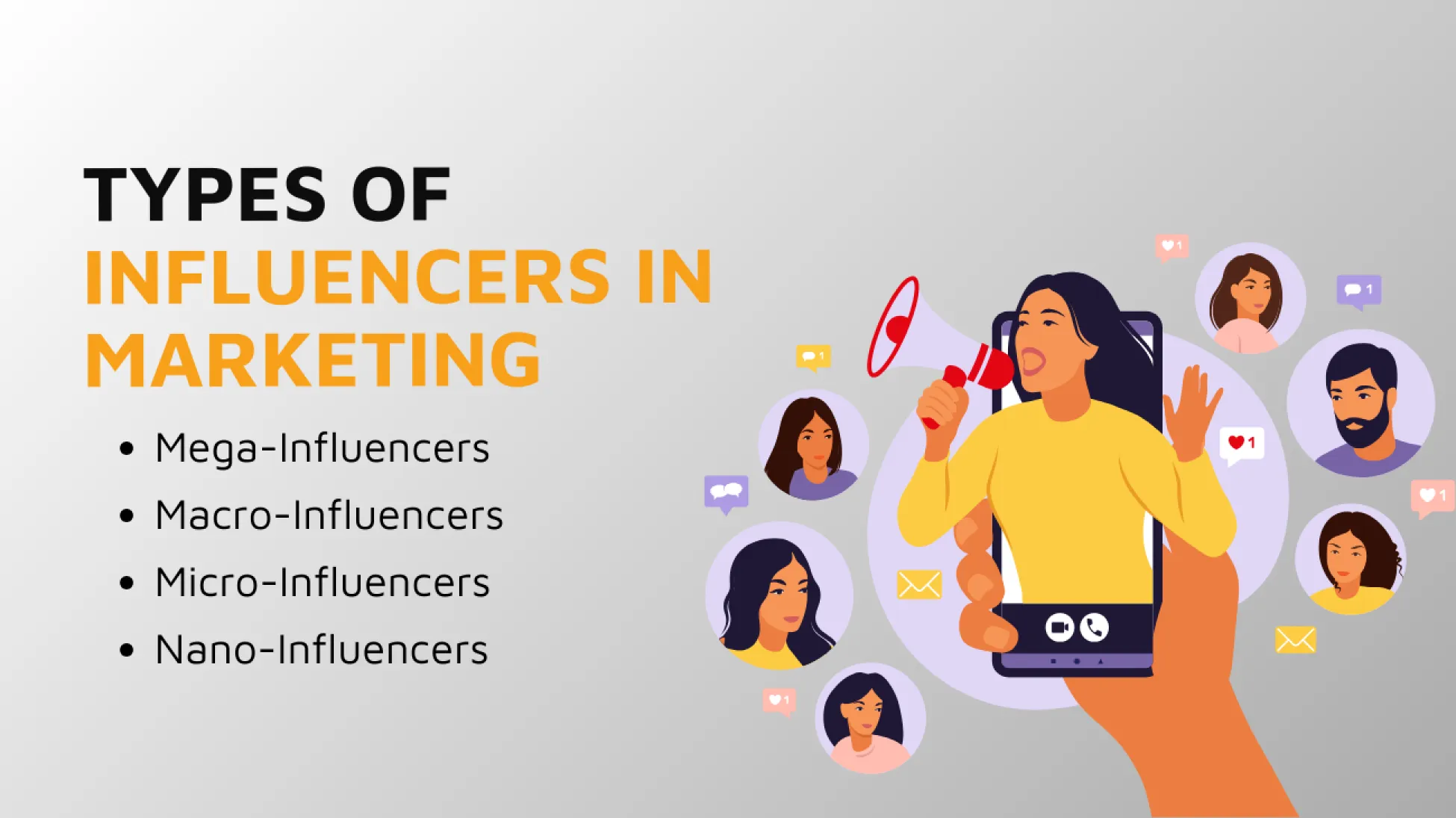
Types of Influencers in Marketing
1. Mega-Influencers
- Followers: Over 1 million.
- Platforms: Instagram, YouTube, TikTok.
- Example: Celebrities and global icons.
2. Macro-Influencers
- Followers: 100,000–1 million.
- Platforms: Instagram influencer marketing, YouTube tutorials, and more.
- Example: Travel vloggers and lifestyle bloggers.
3. Micro-Influencers
- Followers: 10,000–100,000.
- Platforms: TikTok influencer marketing, Instagram stories.
- Example: Niche experts like fitness coaches or food bloggers.
4. Nano-Influencers
- Followers: Under 10,000.
- Perfect for hyper-local campaigns and authentic engagement.
Influencer Marketing Examples
- Fashion and Lifestyle:
A fashion brand collaborates with Instagram influencers for seasonal promotions. Influencers showcase outfits, generating excitement and sales.
- Tech Industry:
Tech companies partner with social influencers to post reviews on gadgets, boosting credibility and visibility among tech enthusiasts.
- Food & Beverage:
Restaurants leverage TikTok influencer marketing by inviting food bloggers to review their menus, leading to viral videos and increased foot traffic.
- Fitness:
Fitness brands work with internet influencers to promote workout plans and gym equipment, motivating audiences to adopt healthier lifestyles.
How to Run a Successful Influencer Marketing Campaign
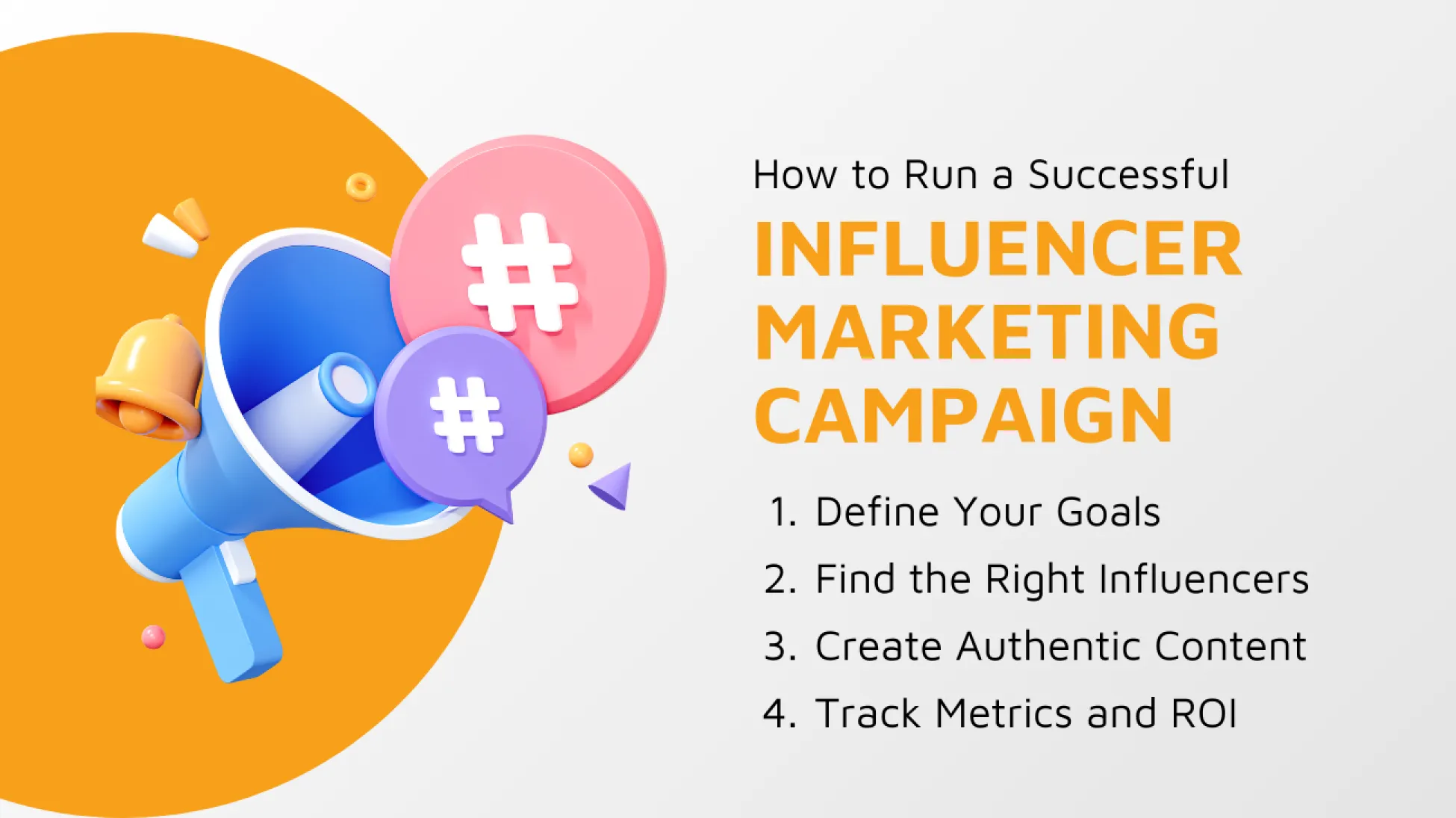
1. Define Your Goals
Identify the purpose of your campaign: brand awareness, lead generation, sales, or community engagement.
2. Find the Right Influencers
Use influencer platforms or manual research to identify social media influencers whose audiences align with your brand.
3. Create Authentic Content
Influencer content should feel organic, not scripted. Let the digital influencer have creative freedom to ensure authenticity.
4. Track Metrics and ROI
Measure engagement, reach, and conversions to evaluate your campaign’s success. Use tools like Google Analytics or platform-specific insights.
Social Media Strategy with Influencer Marketing
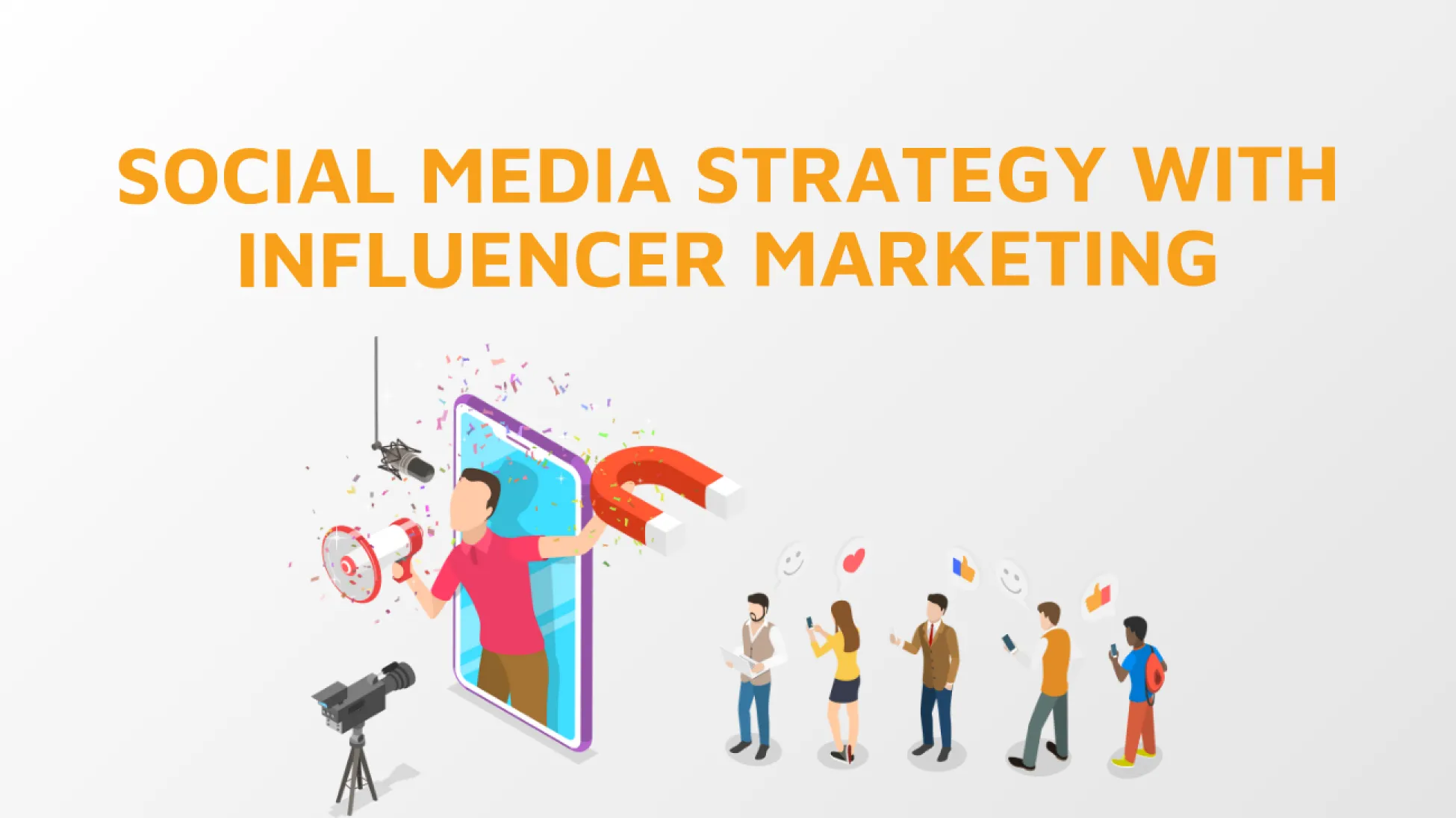
Influencer marketing works best when integrated into a well-rounded social media strategy with the best social media marketing tips. It should complement your broader efforts by benefiting from the credibility of influencers while maintaining brand consistency. Here’s how to do it effectively:
Posting Schedule
Ensure that influencer-generated content aligns with your brand’s posting schedule. Regular, well-timed posts across your channels keep your audience engaged and reinforce campaign messaging.
High-Quality, Engaging Visuals
Pair influencer content with visually appealing posts, such as branded graphics, professional photography, and engaging short-form videos. Strong visuals amplify the impact of influencer endorsements.
Targeted Advertising
Boost influencer posts using paid promotions on platforms like Instagram and Facebook. Use audience targeting to maximize reach, focusing on demographics that match the influencer’s followers.
Cross-Promotion
Share influencer-generated content on your brand’s profiles, stories, and highlights. Tag the influencers to enhance authenticity and encourage their followers to engage with your page.
Multi-Channel Approach
Extend influencer campaigns across platforms like Instagram, TikTok, and YouTube. Each platform offers unique ways to connect with audiences, from short reels, highlights, and stories to live streams and in-depth videos.
Track Campaign Metrics
Incorporate influencer marketing into your social media analytics. Measure metrics like engagement, reach, and conversions to assess the effectiveness of campaigns and identify areas for improvement.
By integrating influencer collaborations into your overall social media strategy, you can create a cohesive, impactful presence that drives brand awareness, engagement, and results.
Related: Understand Social Media Strategy to Achieve Your Brand Recognition
Instagram Influencer Marketing Tips
Carousel Posts or Videos for Value-Packed Content: Encourage influencers to share carousel or video posts that provide tips, tutorials, or before-and-after results. This format increases engagement.
User-Generated Content (UGC): Ask influencers to encourage their followers to create content featuring your product or service review. Share this content on your brand’s profile for added credibility.
Sponsored Posts with Authentic Captions: Ensure influencer captions are authentic and storytelling-driven, avoiding overt sales language. Authenticity resonates better with audiences.
Use Instagram Highlights for Longevity: Have influencers save key stories about your brand in their Highlights so the content remains visible to new visitors.
Question Stickers for Feedback: Ask influencers to use the “Question” sticker to gather feedback or ideas from their followers about your product or service.
Track Engagement with Branded Hashtags: Create a unique hashtag for your campaign and ask influencers to include it in their posts. Monitor the hashtag to track user interactions.
Post During Peak Engagement Hours: Research the best times that your target audience is online and schedule influencer posts during those hours for maximum visibility.
IG Filters: Create fun, branded Instagram filters that influencers can use in their stories or reels, making the content more interactive and shareable.
Reels Challenges or Trends: Partner with influencers to create unique challenges or trends that align with your brand. Ask them to encourage their followers to participate in viral growth.
A/B Test Content Styles: Experiment with different types of influencer content, such as tutorials vs. product-focused images, to see what resonates best with audiences.
Track Influencer-Specific Metrics: Use unique links or promo codes for each influencer to measure individual performance, helping you identify the most impactful collaborations.
Feature Influencers on Your Brand’s Profile: Showcase influencers’ content on your page to highlight their association with your brand. Tag them to encourage cross-promotion.
Use Polls for Product Validation: Have influencers create polls asking followers about their preferences or opinions regarding your products. Use the feedback for product development or marketing ideas.
TikTok Influencer Marketing: Why It’s Booming
TikTok has emerged as a powerhouse for influencer marketing, thanks to its short-form videos, viral trends, and massive user base. The platform’s unique algorithm promotes discoverability, making it an ideal space for brands to reach and engage audiences, particularly Gen Z and Millennials. The major credit goes to its following features:
High Engagement Rates: TikTok’s interactive nature, including likes, comments, and duets, fosters deeper audience engagement compared to other platforms.
Viral Trends: Influencers often initiate or amplify trending challenges, music, or hashtags, creating opportunities for brands to integrate naturally into the platform’s culture.
Authenticity Over Perfection: TikTok content thrives on authenticity, allowing influencers to create relatable and unfiltered content that resonates with their followers.
Diverse Content Formats: TikTok supports tutorials, product demonstrations, storytelling, and humor, offering versatile ways for brands to connect with audiences.
Pro Tip: Collaborate with influencers to create branded challenges, encouraging users to participate and generate organic user-generated content. Use trending hashtags relevant to your campaign for better reach and visibility. Leverage TikTok’s paid advertising tools, such as Spark Ads, to amplify influencer content directly to your target audience.
Usefulness for Small Businesses
Even small businesses can benefit from influencer marketing campaigns by working with nano- or micro-influencers. These partnerships are affordable and allow small brands to connect with highly engaged audiences who follow specific influencers from your niche, resulting in followers, leads, and conversions.
Challenges of Influencer Marketing
- Finding the Right Influencers: Partnering with influencers whose values align with your brand is crucial.
- Fake Followers: Some influencers inflate follower counts. Always verify their engagement rates.
- Measuring ROI: Keeping track of direct sales and conversions from influencer campaigns can be a bit tricky but possible with links or promo codes.
Related: The Ultimate Guide to Successfully Launching Your Startup
Conclusion
The benefits of influencer marketing are undeniable. From increasing brand awareness to driving conversions, social media influencers are transforming how businesses connect with their audiences.
Whether you’re exploring TikTok influencer marketing or looking for Instagram influencer marketing tips, integrating influencers into your social media strategy is a must.
Partner with CyberX Studio to leverage the power of digital influencers and watch your brand’s presence, image, and recognition skyrocket!
FAQs
Why is influencer marketing so effective?
Influencer marketing works because it leverages the trust influencers have built with their audiences. Recommendations from influencers feel authentic and are more likely to drive action than traditional ads.
How does influencer marketing work?
Brands identify influencers with audiences that align with their target demographics. The influencer then creates content, such as posts, stories, or videos, featuring the brand’s products or services.
What platforms are best for influencer marketing?
Instagram, TikTok, YouTube, and Facebook are the most popular platforms for influencer marketing. Each offers unique opportunities to connect with audiences.
How do I measure the success of an influencer marketing campaign?
Success is measured using metrics such as reach, engagement (likes, shares, comments), click-through rates, and conversions. Promo codes and affiliate links can also help track ROI.
How much does influencer marketing cost?
Costs vary depending on the influencer’s reach, platform, and content type.
How do I choose the right influencer for my brand?
Look for influencers whose audience aligns with your target market, have high engagement rates, and whose values match your brand ethos.
Does CyberX Studio provide influencer marketing services?
Yes, CyberX Studio offers comprehensive influencer marketing services, including influencer identification, campaign strategy, content creation, campaign launch, and performance tracking.
How can I request influencer marketing services from CyberX Studio?
You can request our services by contacting us through our contact number on our website, filling out the inquiry form, or reaching out directly to our customer support team.
How long does it take to launch an influencer marketing campaign with CyberX Studio?
Campaign timelines vary based on goals and scope, but most campaigns are planned, executed, and launched within 2–6 weeks.

